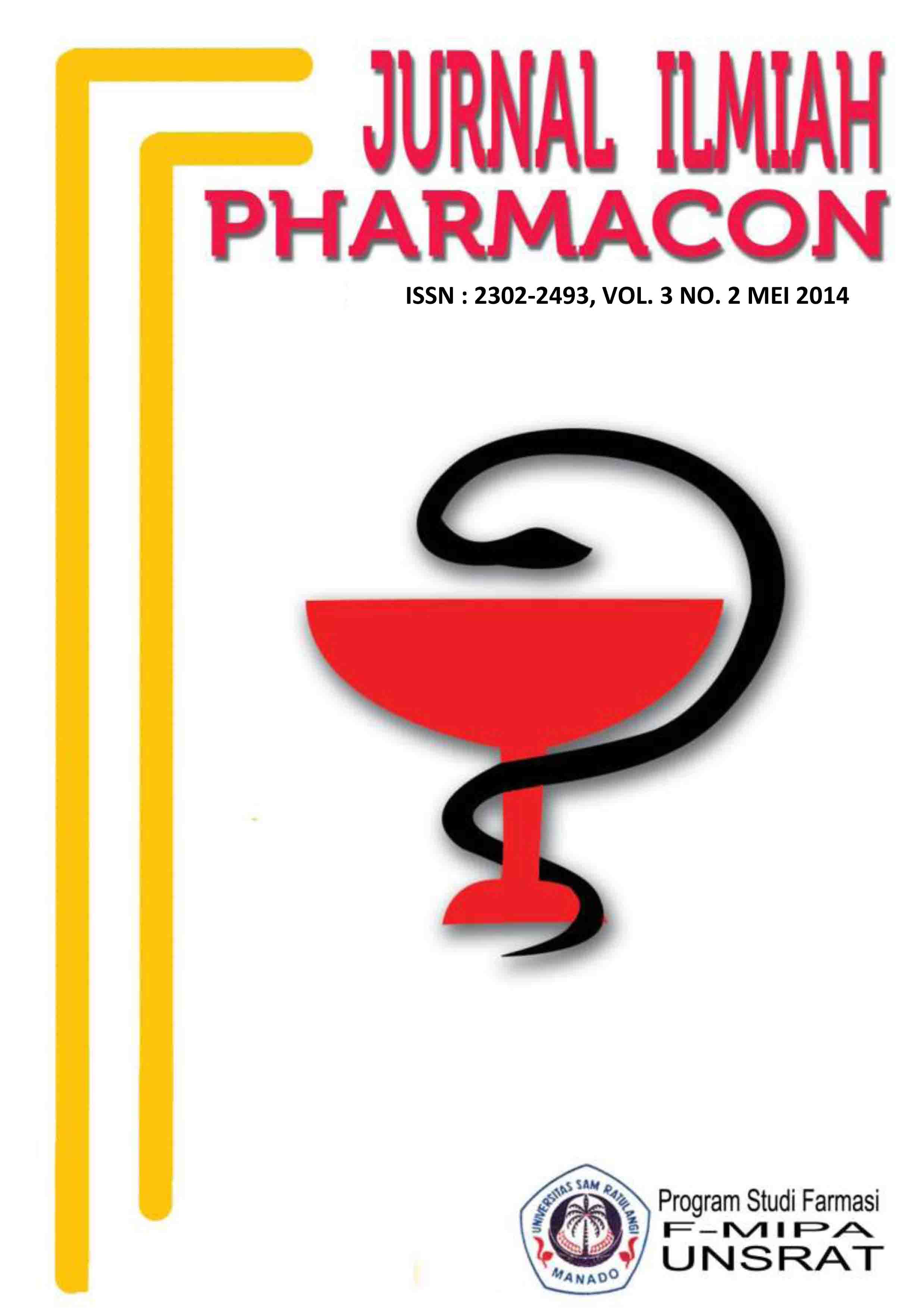UJI DAYA HAMBAT EKSTRAK ETANOL DAUN KEMBANG SEPATU (Hibiscus rosa-sinensis L) TERHADAP PERTUMBUHAN BAKTERI Escherichia coli
DOI:
https://doi.org/10.35799/pha.3.2014.4779Abstract
The prevalence of diarhea in Indonesia is considered high and one cause is Escherichia coli. The aim of this research was to determine anti-bacterial inhibition, effective concentration, and the effect of increasing concentration of ethanol extract of Hibiscus rosa-sinensis to the growth of E. coli. Extract of H. rosa-sinensis was obtained by masseration using 95% ethanol as solvent. Bacterial growth inhibition employed Kirby-Bauer Method using agar diffusion through wells. Measurement of bacterial inhibition was analysed using one way anova and continued with Least Significantly Difference. Anova showed inhibition by 5%, 10%, 20%, 40%, 80% of extracts. Effective concentrations occured on 20% and 40%. The increasing of extract concentration showed correlation with the increasing of inhibition zone diameters.
Â
Key words : Hibiscus rosa-sinensis leaf, ethanol extract, inhibition, E. coli
Downloads
How to Cite
Issue
Section
License
Authors who publish with this journal agree to the following terms:
- Authors retain copyright and grant the journal right of first publication with the work simultaneously licensed under a Creative Commons Attribution-NonCommercial 4.0 International License that allows others to share the work with an acknowledgement of the work's authorship and initial publication in this journal.
- Authors are permitted and encouraged to post their work online (e.g., in institutional repositories or on their website) prior to and during the submission process, as it can lead to productive exchanges, as well as earlier and greater citation of published work (See The Effect of Open Access)










